Interested in Disposal?
Get Disposal articles, news and videos right in your inbox! Sign up now.
Disposal + Get AlertsDewatering Equipment
BDP Industries 3DP Belt Press
The skid-mounted 3DP Belt Press from BDP Industries is a turnkey dewatering solution with all components integrated on a hot dip galvanized skid for easy semi-permanent installation. This skid includes a booster pump, sludge pump, emulsion polymer system, hydraulic unit, controls and a 20-foot stainless steel screw conveyor. The press includes an independent gravity section, vertical pressure section and paddlewheel distributor. Features addressing odor control concerns include odor hoods, enclosed gravity sections, piped away filtrate and noise-reducing shower boxes. 518-695-6851; www.bdpindustries.com
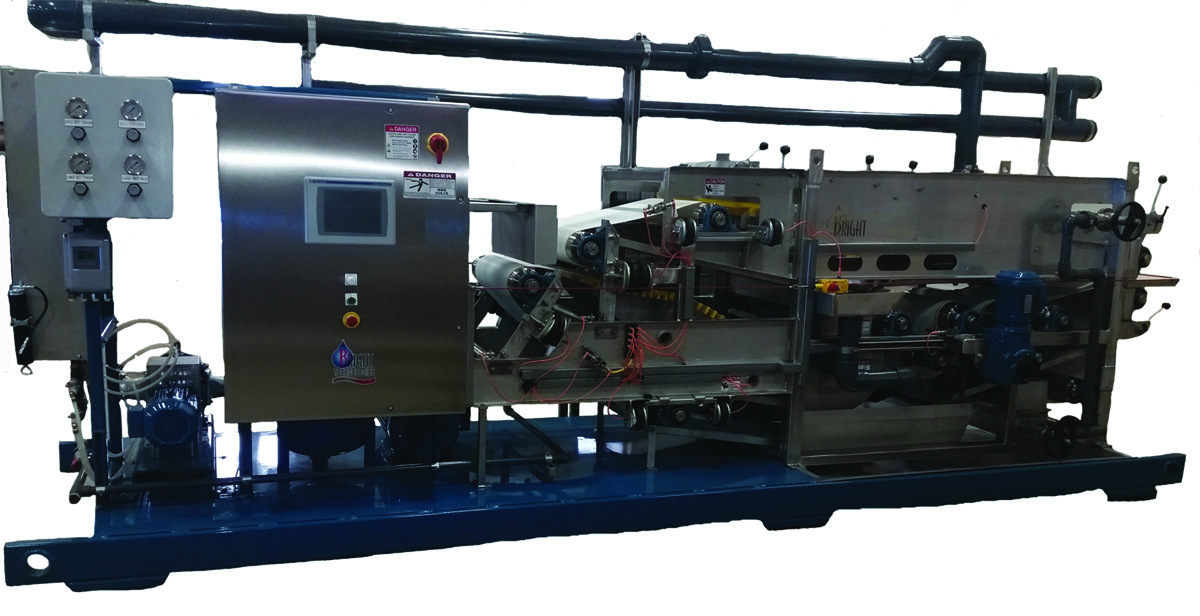
Bright Technologies, Division of Sebright Products, 0.6-meter skid-mounted belt filter press
The compact 0.6-meter skid-mounted belt filter press from Bright Technologies, Division of Sebright Products, has stainless steel frame and roller construction as well as radius wedge zone and wing roller for sludge dewatering. Components include a sludge pump, polymer system and wash-water booster pump. Options include a sludge flowmeter, air compressor and discharge conveyors. With a compact, walk-around skid design, it can be utilized in as little as a 10-by-20-foot floor area. The Boerger rotary lobe sludge pump has a maintain-in-place design offering ease of maintenance. Cake solids of up to 35% can be achieved. Rates of 25 to 50 gpm make it ideal for small applications or when a processor has outgrown dewatering containers. 800-253-0532; www.sebrightproducts.com
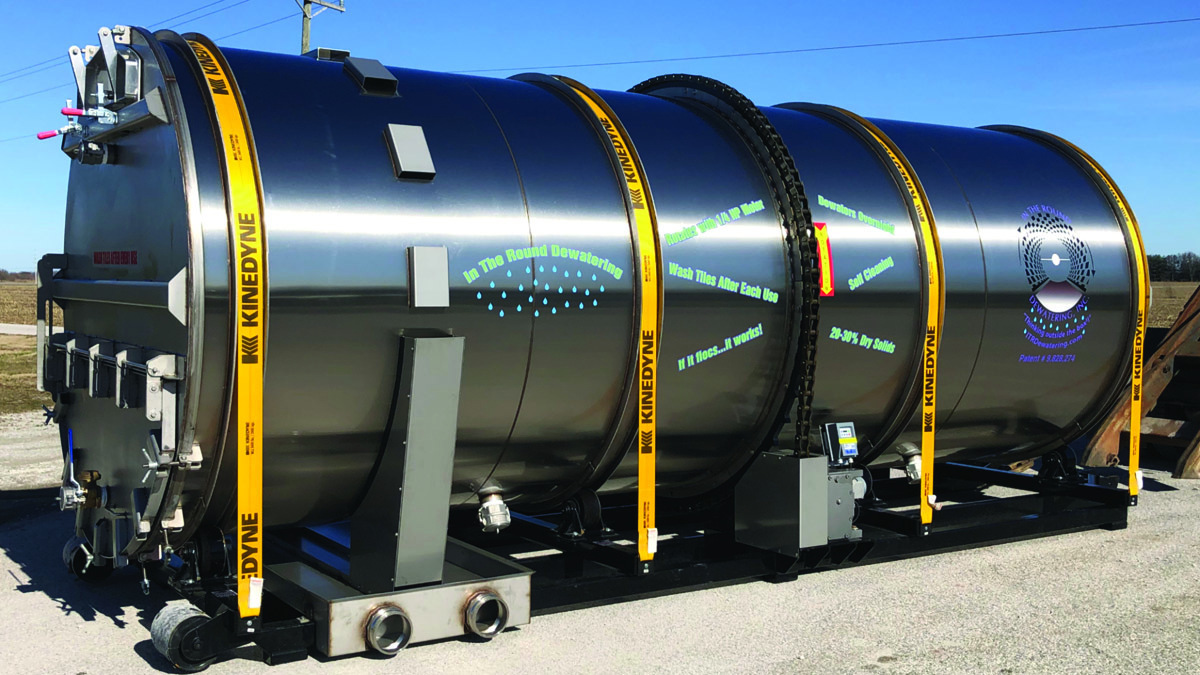
In the Round Dewatering horizontal drum
The horizontal biosolids dewatering system from In the Round Dewatering features a stainless steel drum with perforated plastic tile lining. The drum is mounted on a roll-off frame for easy transport and unloading. Trays contain discharge water. An 18,000- to 25,000-gallon batch is mixed with polymer before being filtered in the rotating drum, which is driven by a 1/2 hp variable-speed electric motor with a heavy-duty chain and sprocket. Turning eliminates crusting and wet pockets to produce uniform, consistent results. The dewatered material dumps easily, and the drum is self-cleaning. 317-563-2072; www.itrdewatering.com
Dewatering/Bypass Pumps
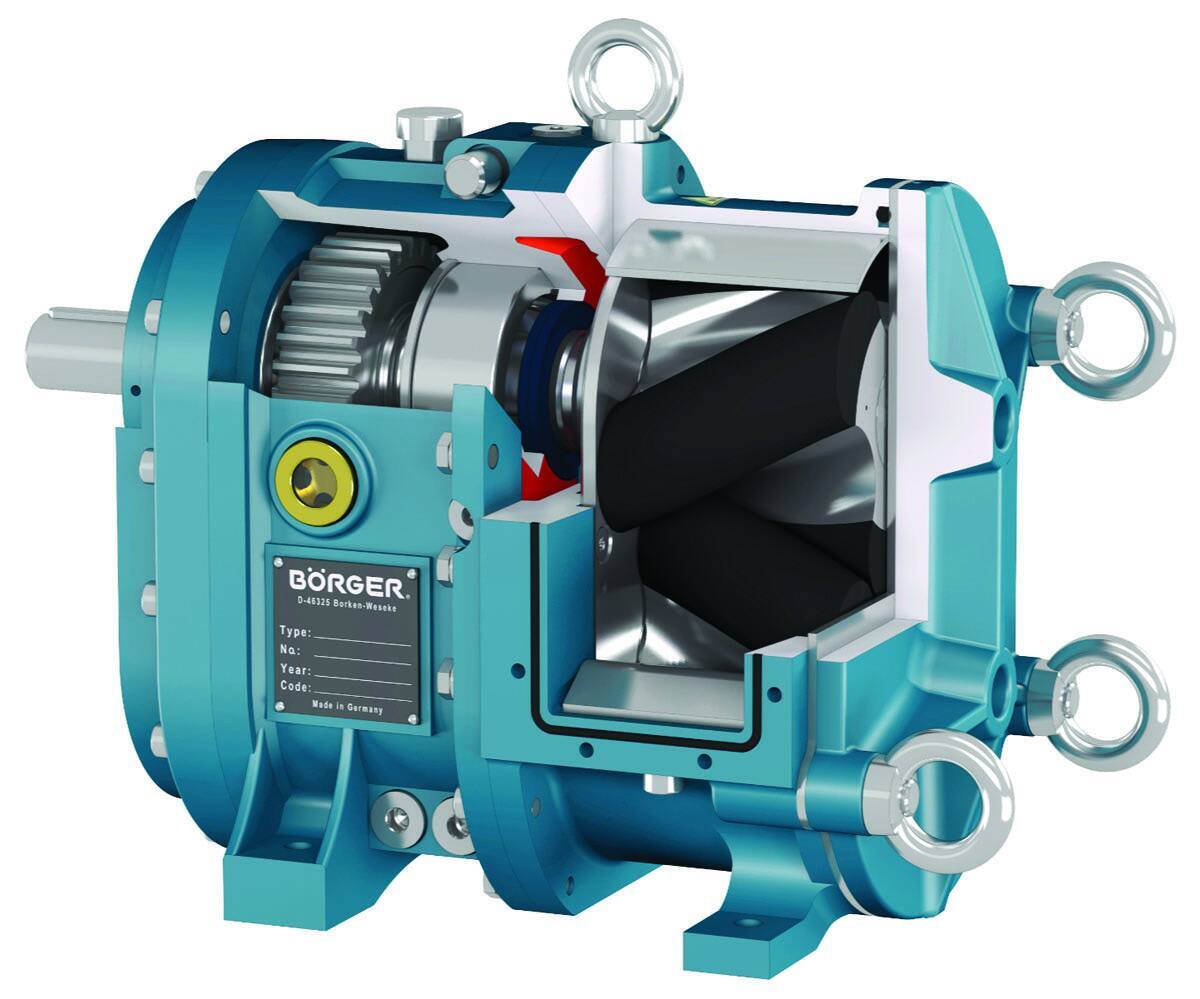
Boerger BLUEline rotary lobe pumps
Boerger BLUEline rotary lobe pumps are a self-priming, valveless positive displacement pump used for conveying viscous and abrasive materials. They are resistant to wear and provide pulsation-free operation. Operation is fully reversible, with dry run capability and flow rates up to 7,000 gpm. They are constructed with maintenance-in-place design, allowing for all wetted parts to be easily replaced through the front cover without removing pipe or drive systems. The pump conveys biosolids (primary, waste activated sludge, return activated sludge, digested, thickened, etc.), grease, sewage, scum, lime slurry, alum sludge, permeate and polymers. 612-435-7300; www.boerger.com
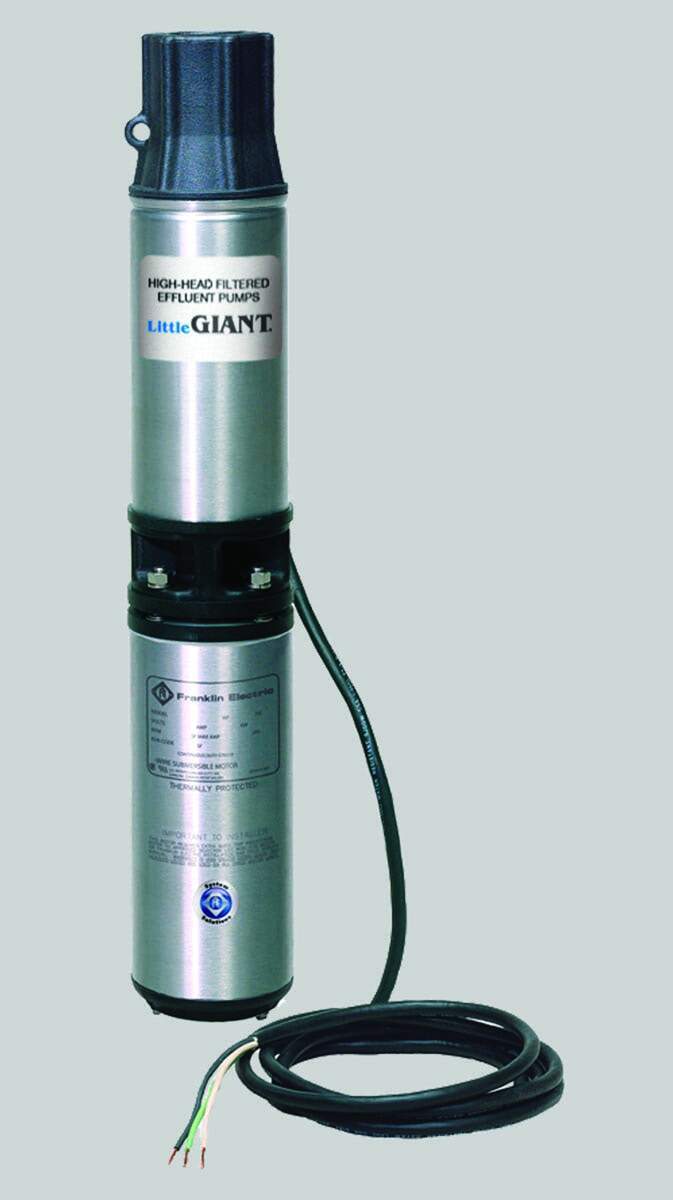
Franklin Electric Little Giant WE Series
Designed to pump treated effluent longer distances than normal effluent sump-style pumps, the Little Giant WE Series is built with a Franklin Electric submersible motor, providing maximum durability with years of reliable service. It consists of a high-head filtered effluent pump powered by a 1/2 hp submersible motor and includes a removable built-in check valve. The high-quality top bearing and stainless steel upthrust washer add resilience and reliability. 800-437-6897; www.littlegiant.com
Roll-Off Containers
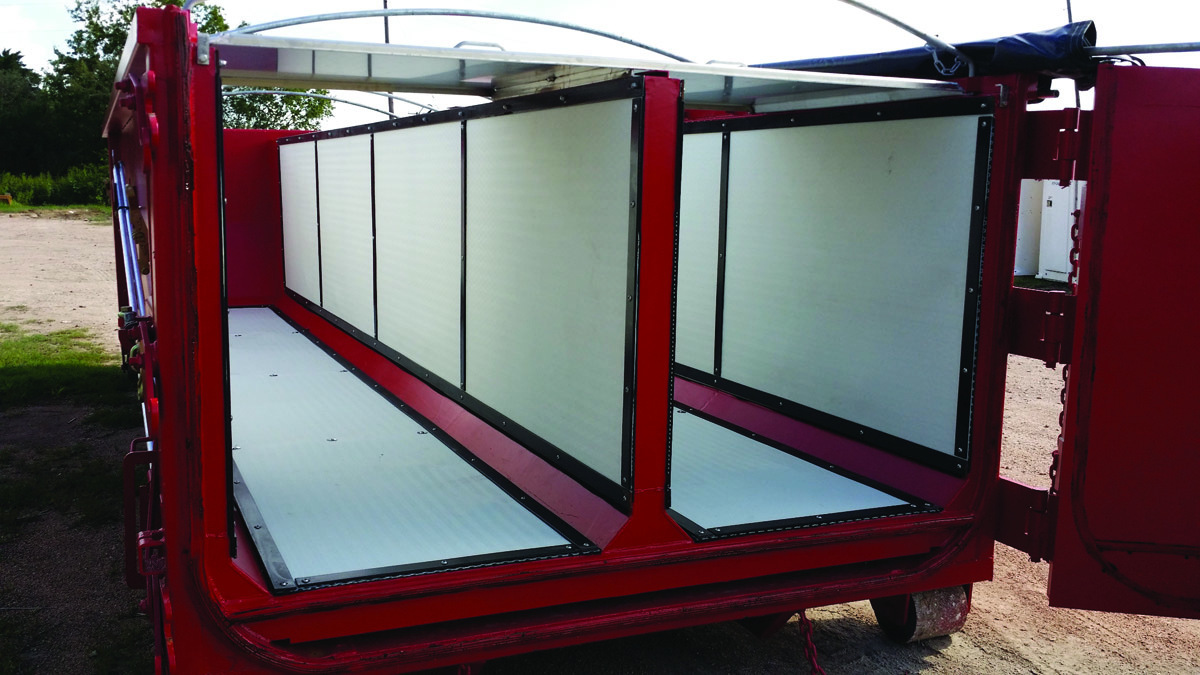
AQUA-Zyme Disposal Systems ADS
The ADS 30-yard open-top roll-off dewatering unit from AQUA-Zyme Disposal Systems can be filled with 22,000 to 25,000 gallons of biosolids at 1% to 2% solids in about two hours. After draining for 24 hours, the unit can be picked up using a standard-capacity roll-off truck and transported for solids disposal. Sludge volume can be reduced by 80% with reductions to 98% in BOD, COD, FOG and TSS. Effluent is clear, the unit has few moving parts, and the size of filter media can be selected according to job requirements. Standard equipment includes a roll-over tarp system; side, floor and center screens; 1/4-inch floor plate; 7-gauge side plates; four door-binder ratchets; eight drain ports; two inlet ports; and a long-handle scraper. Units are also available in a 15-yard size. 979-245-5656; www.aqua-zyme.com
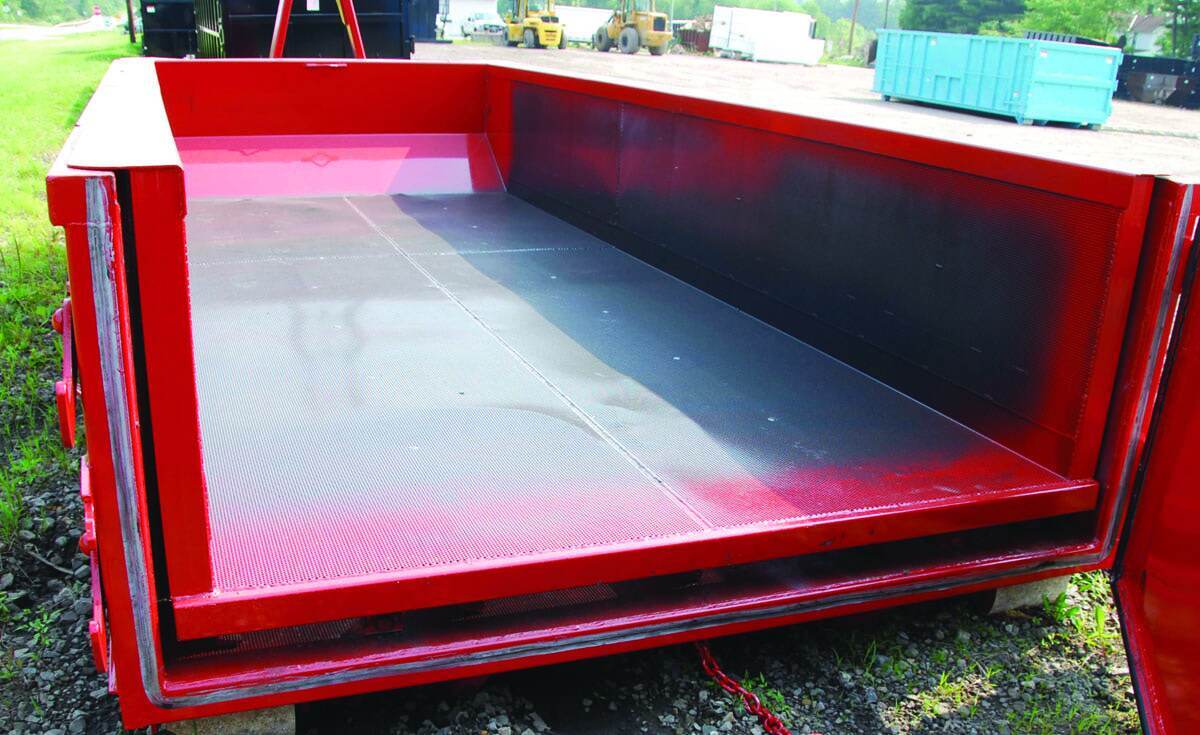
Bucks Fabricating Dewatering-Style Roll-Off Containers
Dewatering-style roll-off containers from Bucks Fabricating feature a removable perforated steel basket that filters the materials within, separating the liquids to the bottom while the sludge materials remain on top. From there, the fittings, or apertures, commonly located on the bottom of the sealed tailgate allow the hauler to drain the liquid from the container. This process decreases the container payload. Available in cable, hooklift, combo or permanent-mount hookups, dewatering containers are manufactured in standard and custom sizes. 800-233-0867; www.bucksfab.com
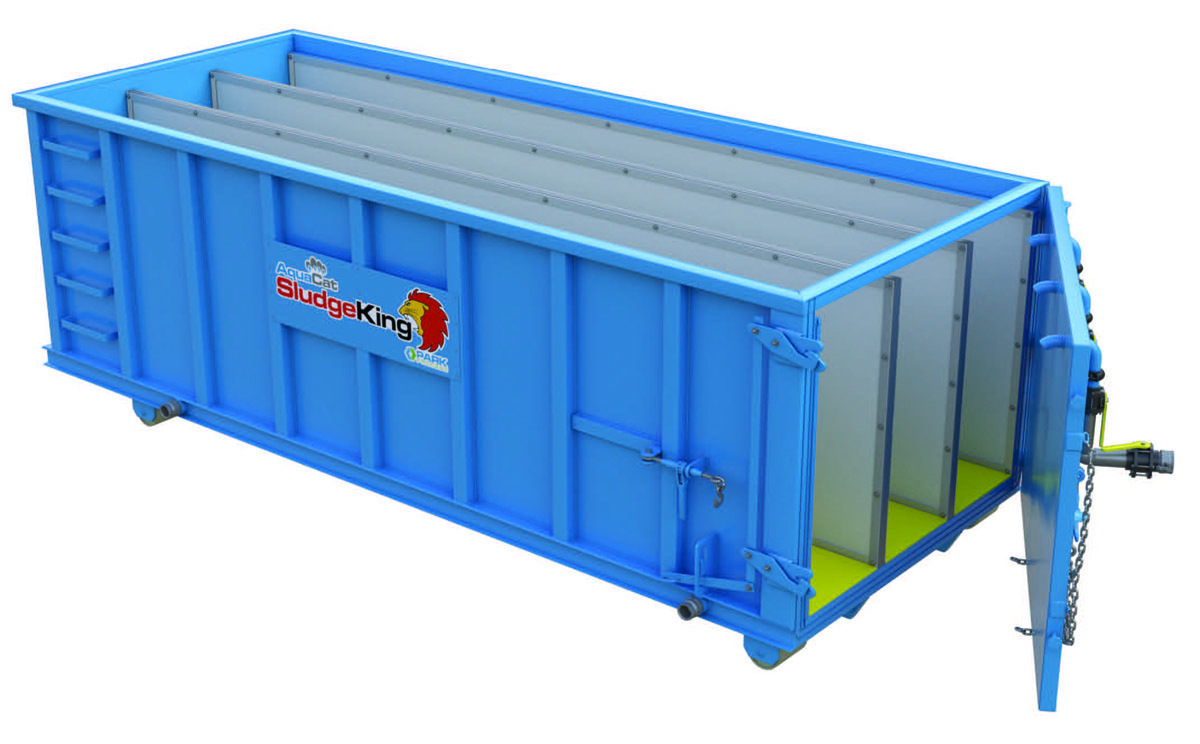
Park Process Sludge King II
The Sludge King II roll-off dewatering container from Park Process incorporates an engineered design that eliminates trapped water in the bottom of the filter cake. The second center wall filter increases filter area by 33% producing drier cakes in less time. The plastic floor panels that cover the floor space between wall filters and center wall filters serve three purposes. They hold down the bottom of the filter elements, help eliminate standing water and aid in filter cake dumping. The inlet manifold is split into three inlets, each with a ball valve, allowing incoming flow to be distributed evenly into the three compartments formed by the two center-wall filters. 855-511-7275; www.parkprocess.com

Pik Rite self-contained roll-off vacuum tank unit
Pik Rite self-contained roll-off vacuum units are fully operational at the pumping site without a chassis. The heavy-duty front platform holds a choice of pump and a Kohler 25 hp electric-start engine. The tank is set up with a level indicator, rear sight eyes, 36-inch top manway, 20-inch rear manway, 3-inch intake with an internal 3-inch standpipe and a 4-inch discharge. The low-profile, 12-inch primary shut-off is paired with a 10-gallon secondary shut-off. Spray-on protective liner protects hoses and promotes durability. Work lights and a safety beacon are mounted on the rear tank head, and a ladder is mounted on the side. Polished aluminum hose trays and custom paint finish are standard. Other customizable options are available. 800-326-9763; www.pikrite.com
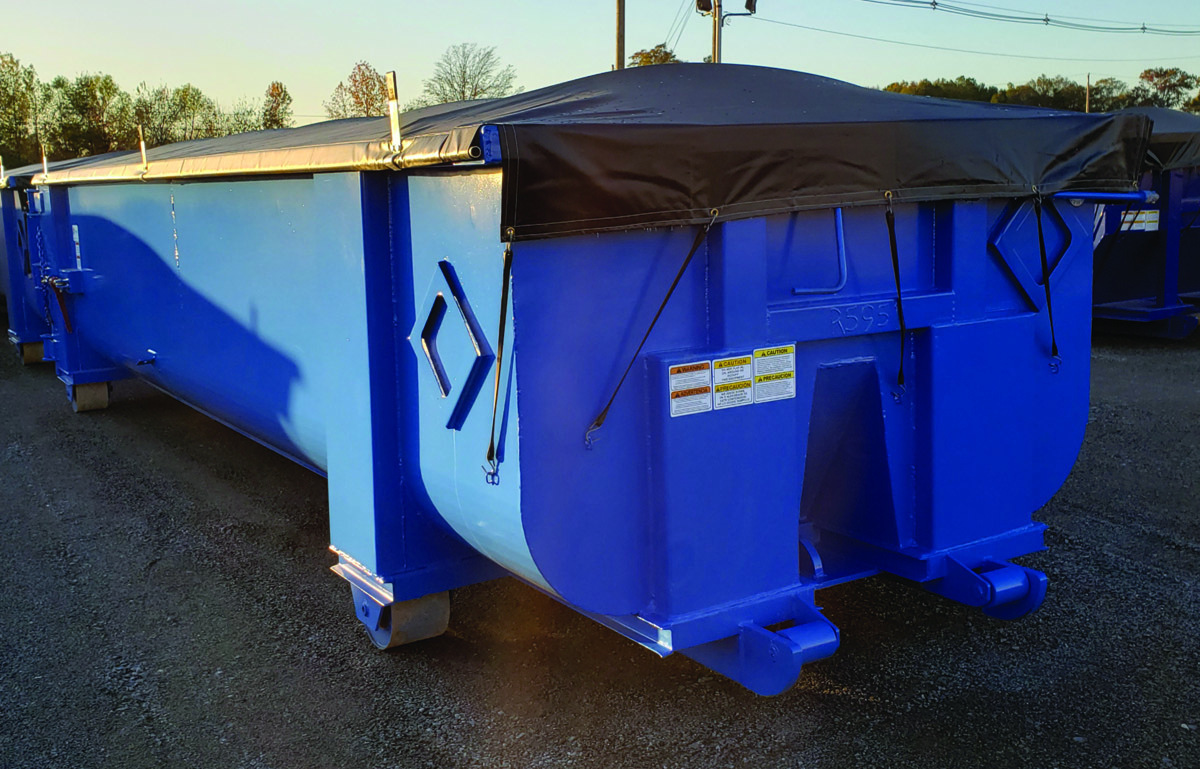
Pinnacle roll tarp sludge container
Roll tarp sludge containers from Pinnacle come standard in 20-, 25-, 30- and 40-cubic-yard capacities. The radius-bottom containers have 1/4-inch floors and 3/16-inch sidewalls. All containers are water-tested to the top of the container for 30 to 45 minutes and come standard with a side-roll tarp. Custom sizes, dewatering baskets and other modifications are available. All are blasted prior to painting and the shell is powder coated. 256-840-8031; www.pinnaclemfg.net
Screens/Strainers/Screening Systems
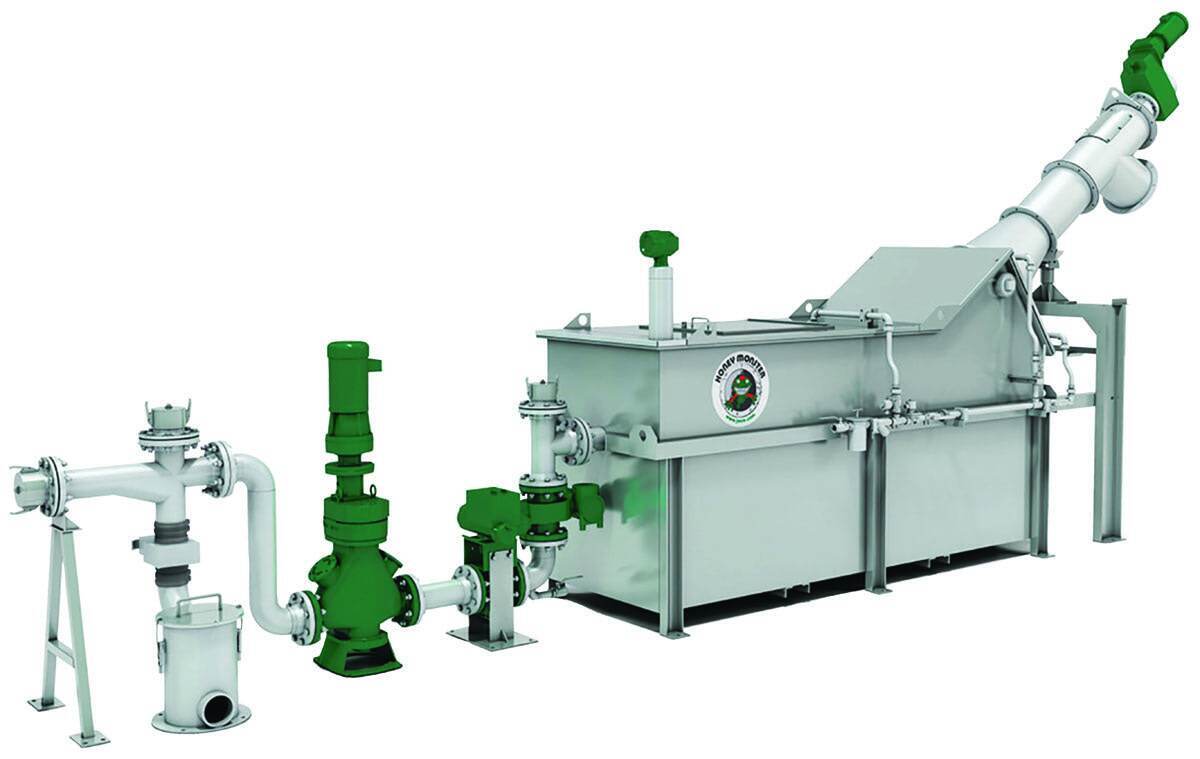
JWC Environmental Honey Monster
The Honey Monster septage receiving station and FOG receiving system from JWC Environmental is designed to ease the management of septage waste for the wastewater plant operator and the hauler. It quickly screens and processes septage, grease, FOG and sludge from vacuum trucks. The automated septage acceptance plant provides for cleaner handling of septage truck waste by reducing and separating unwanted solids such as rocks, rags, clothing, plastics and other trash, according to the maker. The combination of grinding, solids removal, washing and dewatering allows a typical septage truck to unload in 5 to 15 minutes. It is completely enclosed to ensure safety, vector control and containment of foul odors. The optional MonsterTrack metering and control system uses a flowmeter to track septage and provide accurate billing data for the facility and a receipt for the hauler. 800-331-2277; www.jwce.com
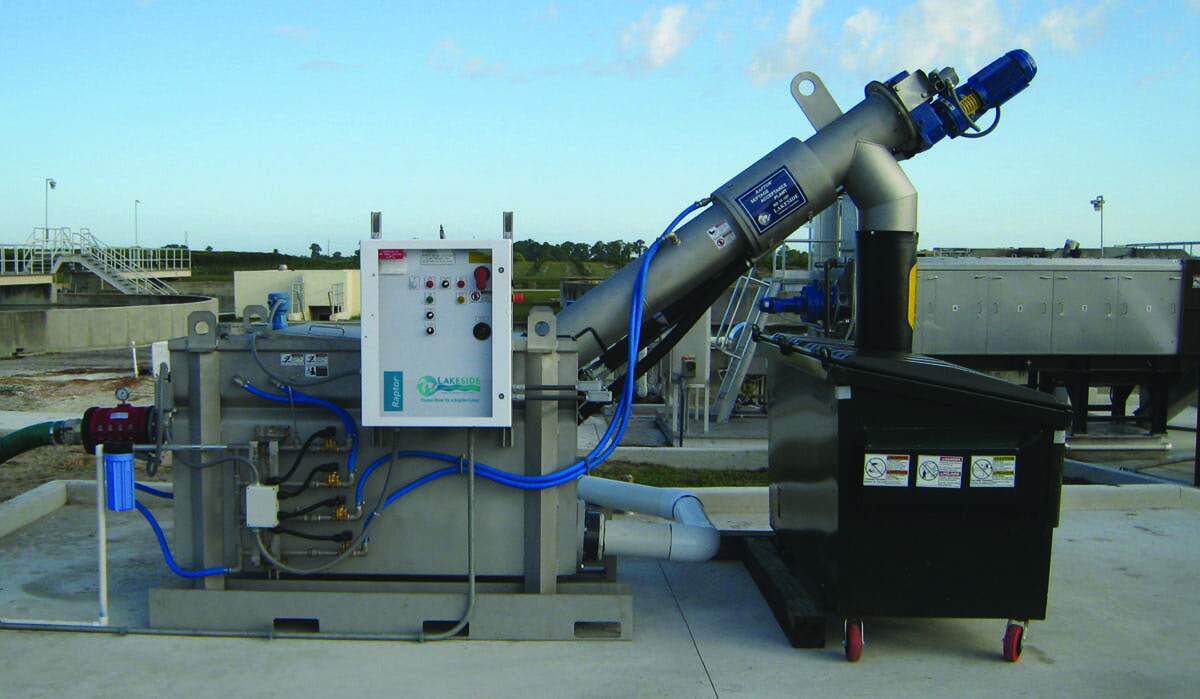
Lakeside Equipment Raptor Septage Acceptance Plant
The fully automated Raptor Septage Acceptance Plant from Lakeside Equipment is designed to remove debris and inorganic solids from septage tanks, grease traps, sludge, leachate and industrial waste. It includes the Raptor Fine Screen, which compacts and dewaters the captured screenings to a solids content of 40%. The screen’s rotating rake teeth penetrate the cylindrical screen bars, which prevents plugging and binding from grease and small debris. This allows for faster unloading times. The Raptor Acceptance Control System is a security access station that can be integrated to allow authorized haulers to unload their waste at the facility. Adding the data management and accounting system with the RACS station provides capabilities to track and invoice customers. 630-837-5640; www.lakeside-equipment.com
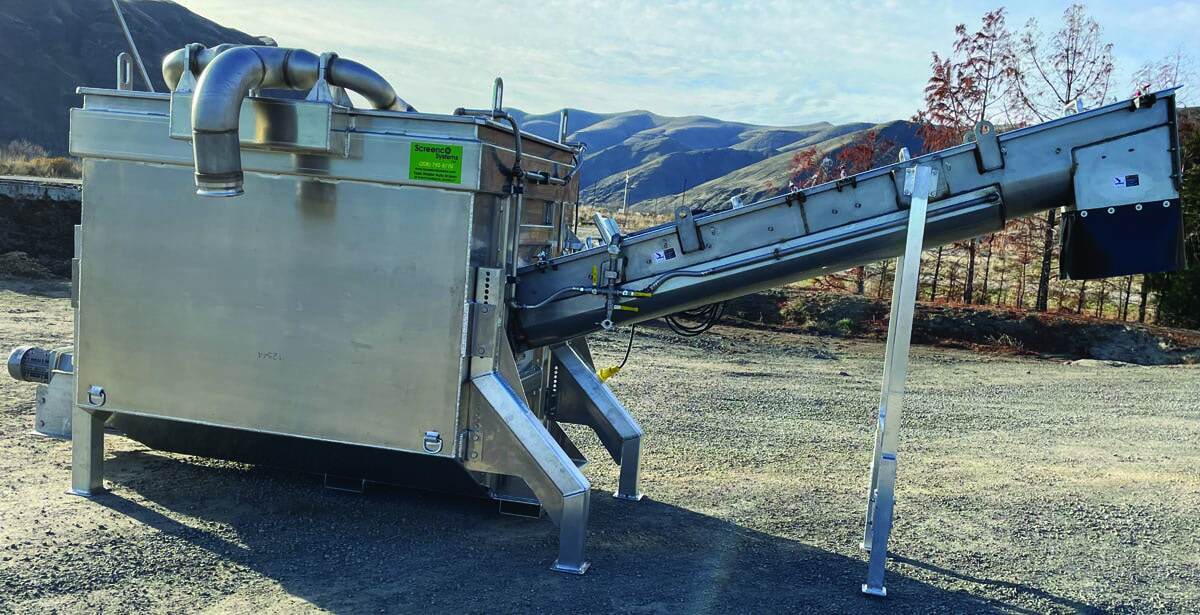
ScreencO Systems Trash Master 600 Auto Screen
The Trash Master 600 Auto Screen from ScreencO Systems uses gravity to separate the trash from the flow stream through a 6-inch inlet with dual fan spreaders. It is capable of power-offloading vacuum trucks with a single 6-inch offload or 2- to 4-inch offloads at the same time at a rate of up to 800 gpm. It comes with an aluminum hopper (stainless steel is optional), with an 8-inch outlet cam and 3/8-inch gapped 1/4-inch stainless steel bar screen. The stainless steel U-channel with ultra high molecular weight polyethylene plastic-lined titanium provides for years of wear, with a high strength alloy steel 11 1/2-inch shaftless screw that moves trash to a waste container. The U-channel has slotted drain holes and a center channel bar screen for cleaner and dryer trash. A custom-built stainless steel bar rake and cleaning brush are included for easy maintenance. 208-790-8770; www.screencosystems.com






